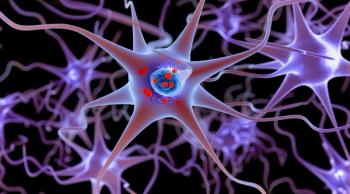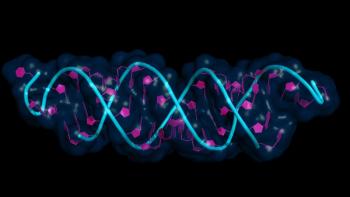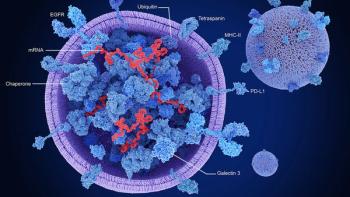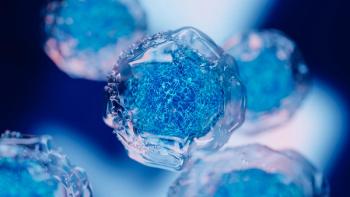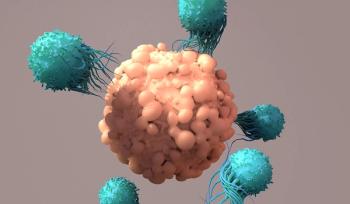
- BioPharm International-02-01-2006
- Volume 19
- Issue 2
Equipment Cleaning Validation Within a Multi-Product Manufacturing Facility
Before designing cleaning procedures, it's vital to know all physical and chemical characteristics of the product ingredients.
Currently, there are multiple publications, as well as guidelines from regulatory agencies that make the critical process of equipment cleaning validation easier. These sources provide in-depth information for the validation specialist, making the development and implementation of a robust cleaning validation program possible within any particular facility developing or manufacturing parenteral, biological, or sterile ophthalmic products.
José A. Morales Sánchez
Extremely important, specific, and above all, mandatory, are the requirements established by regulatory agencies such as the US Food and Drug Administration (FDA), the European Medicinal Evaluation Agency (EMEA), Australia's Therapeutic Goods Administration (TGA), etc. For example, the 2004 Code of Federal Regulations (CFR) Title 21, Volume 4, Section 211.67, states:
"Equipment and utensils shall be cleaned, maintained, and sanitized at appropriate intervals to prevent malfunctions or contamination that would alter the safety, identity, strength, quality or purity of the drug product beyond the official or other established requirements."
Additionally, Section 211.182 requires that cleaning procedures must be documented appropriately, and that a cleaning and use log should be established.
This article provides the reader with cleaning validation information enhanced by the author's thirteen years of hands-on experience working in equipment cleaning validation.
SCOPE
This article focuses on manual cleaning procedures because these are considered the worst-case scenario. It applies to parenterals, ophthalmic, and biologic presentations and is intended to cover equipment validation for raw materials, contaminants, cleaning agents, as well as the control of potential microbial contaminants associated with those products.
The flowchart in Figure 1 graphically shows the different aspects that should be considered when developing a cleaning validation program. Understanding each aspect of the process, the relationships among these actions, and the sequence in which they should take place will make the development of a cleaning validation program a successful experience.
Figure 1. Depiction of Different Aspects for Consideration When Developing a Cleaning Validation Program
PROCESS FLOW
After all applicable cleaning information sources and regulatory guidelines have been consulted, the first item to consider when establishing a cleaning validation program is the raw material and final product flow. By following the flow of the product, one can identify the equipment that comes in contact with it, such as utensils (scoops, spatulas, funnels, pipettes, etc.), tanks, filter housings, pressure vessels, syringes, and others. Equipment such as this is considered critical equipment because it comes in direct contact with the product.
Other areas where raw materials or products are processed, which might be considered non-critical because they are not in direct contact with the product, should also be considered. From the point of view of microbial load, inappropriate cleaning and sanitation of these areas may contribute to cross-contamination. Some examples of these areas include: sampling and weighing rooms, as well as formulation and filling rooms.
Typical steps to follow in process flow are as follows:
Raw Materials Sampling: Raw materials include both active and inactive ingredients. Many active ingredients are potent compounds, such as steroids, cortisone, antibiotics, proteins, and therefore it is important to demonstrate their removal. But be aware that some inactive ingredients have poor solubility in water and their residues may be more difficult to remove than those of an active drug.
Utensils used during the sampling process of raw materials require cleaning validation unless they are disposable. Typically, use of disposable utensils is the preferred practice for parenteral and biological products. The sampling of raw materials should be performed within a controlled environment (classified as 1,000, 10,000, 100,000, etc.,) in order to reduce the introduction of non-intrinsic contamination to the process.
Some firms use extraction hoods equipped with high efficiency particulate air (HEPA) filters and room air conditions that provide an acceptable environment for raw materials sampling. In addition, sampling area and rooms should be cleaned with sanitizing agents. Cleaning effectiveness on those surfaces should be challenged using microbiological tests for verification of bioburden reduction of non-sterilized parts, such as tables, walls, ceiling, fillers, etc.
Weighing of Raw Materials: Some rules followed during raw materials sampling also apply to the raw materials weighing process. Some ingredients will require being weighed inside a glove box due to special environmental requirements (e.g., under nitrogen, etc.). Because glove boxes are usually shared, they too will require cleaning validation.
Product Compounding: This is one of the most critical steps because the equipment used will have direct impact on the finished product. Compounding a finished product requires equipment with large product contact surface areas. The handling of ingredients requires utensils with less product contact surface area. This significant difference is important because the more complex the equipment, the more samples must be taken to demonstrate effective cleaning.
Product formulations involve the use of tanks and ancillary equipment, such as gaskets, pipes, hoses, mixers, and filter housings. Gaskets and hoses are disposable in many pharmaceutical processes, so they do not generally require cleaning validation.
Product Filling: Filling of parenteral, ophthalmic, and biologic products is usually performed within areas of controlled bioburden, ranging in scale from clean to aseptic rooms. Drug products are capable of being contaminated in many ways. Contamination may occur via filling components (tips, caps, bottles, or stoppers); when coming in contact with processing equipment (tanks, manifolds, fillers, machine-syringes, pistons, and blocks); the manufacturing environment, or manufacturing operators.
Some equipment may require cleaning revalidation if components come in contact with the product. Stoppers are siliconized and then are placed in a hopper during filling. Small quantities of silicone are accumulated in the lower part of the hopper where it can degrade over time. If this silicone were to come in contact with the product, it would probably cause product contamination.
Requirements for aseptic processing include cleanable floors, walls, ceilings, particulate, temperature, humidity, cleaning, and disinfecting procedures. When disinfectants are used in the manufacturing area, care must be taken to prevent the product from becoming contaminated with chemical disinfectants. The selection of suitable disinfectants, verification of their effectiveness, and a surface challenge are critical in developing a cleaning and sanitization program. Written procedures for cleaning, maintenance, and sanitization of manufacturing equipment and appropriate areas of the facility are required. Removal of residual disinfectants should be monitored as a precaution against the possibility of product contamination.
Know Product Ingredients and Intended Use of the Final Product
Previous to designing the cleaning procedures, it is necessary to know all physical and chemical characteristics of the product ingredients. Characteristics such as appearance, solubility, potency, and toxicity play an important part in the design strategy of a cleaning validation program. These characteristics will indicate whether solvents or detergents are needed for removal of product residues. Avoid the use of detergents or solvents whenever possible because their use demands added controls.
Regarding the intended use of the product, cleaning procedures related to the production of parenterals are the most critical. Great precautions should be taken with the cleaning procedures surrounding these products, because they will be intravenously administrated to patients and any adverse reaction could cause serious damage to patient health.
Developing Standard Operating Procedures (SOPs) for Cleaning Processes
Once we know and understand the product process flow, the product's ingredients, and the product's intended use, standard operating procedures associated with the cleaning process should be established. These procedures should clearly address the specific method chosen, the cleaning process itself, any detergents, and the allotted cleaning time.
There are three types of cleaning procedures for process equipment: automated Clean in Place (CIP), Clean out of Place (COP), and the manual process. However, the major concern of regulatory agencies has targeted pieces of equipment that will be cleaned manually, and where the primary responsibility for the removal of product residues lies with the cleaning operator. In the case of manual cleaning methods, the effectiveness of cleaning depends upon the design of the procedure and the commitment of the operators to follow that procedure. This requires a well-explained SOP, personnel training, and operator commitment. With all three elements present, reproducibility of the results in terms of removal of product residues from equipment surfaces can be achieved.
Cleaning procedures should cover every type of equipment to be cleaned. They should specify all critical parameters including water flow, temperature, and pressure as well as washing and rinsing times. Usually these will have been previously set through engineering studies. Cleaning procedures should also include specific details regarding disassembly of equipment, where the small parts should be placed, the quantity of detergent to be prepared and its concentration, and the type of brush or piece of cloth used to apply the detergent. The size (length, and internal diameter) and the type of hose used to perform the cleaning process should also be specified. This is important because, if the hose diameter is small, less water is used and a higher pressure is achieved during the operation. Finally, cleaning procedures should be challenged and validated to demonstrate the reproducibility of results for all cleaned parts.
Validated Analytical Methods
Appropriate validated analytical methods for analyzing cleaning validation samples will be used. A validated method is rugged and robust enough to measure the residue limit established. The method used should be based upon previously established residue limits of the active, cleaning agents, and excipients. The method must be appropriate for measuring the analyte at and below the acceptance limit for residue.
Two important parameters in an analytical method used for cleaning validation are: the Limit of Detection (LOD) and the Limit of Quantitation (LOQ). The LOD is the lowest amount of a compound that can be detected. The LOQ is the lowest amount of a compound that can be quantified. The LOD is usually lower than the LOQ, but is never higher. The LOD should never be used to establish residue acceptance limits. Residue acceptance limit should be established based on LOQ for accurate measurement.
One of the important considerations in choosing an analytical method is the type of residue to be analyzed. Residues can be active drugs, cleaning agents, or organic compounds. The methodologies available are either specific or nonspecific. A specific methodology detects a unique compound in the presence of potential contaminants. Some examples of specific methods are high performance liquid chromatography (HPLC), ion chromatography, atomic absorption, capillary electrophoresis, and other chromatographic methods. Nonspecific methods detect any compound that produces a certain response. Some examples of nonspecific methods include total organic carbon (TOC), titrations, pH, and conductivity. Currently, methods that are complimentary to each other are applied to cleaning validation samples. That is, if a specific method is used for active and cleaning agents, then a nonspecific method, such as TOC can be used as a complementary methodology. Cleaning validation methodology includes other important parameters such as linearity, ruggedness, method precision, and reproducibility.
A method used to analyze cleaning validation samples is properly designed if it identifies possible interferences. Many possible sources of interferences include active drugs and excipients, cleaning agents and compounds, swab materials, and solvents used in performing the cleaning process. Still other sources of interference may be triggered when a sample is not handled properly.
In addition, the method validation must contain sample stability for the reference analyte. Choice of validation methods should guarantee that samples remain stable for the time specified for analysis. This includes the stability of all residues that specifically determine the active and the detergent residues.
Validated Swab Recovery Study
The swab recovery must be validated to determine the amount of analyte that can be recovered from a surface. Previous to validating the equipment cleaning procedure, the types of equipment surfaces for product manufacturing should be identified. This means if four types of surfaces are identified such as glass, stainless steel, Teflon, or rubber; each of the four surfaces must be tested for swab recovery.
The study can be performed on simulated product contact surfaces. The efficiency of the swabbing procedure should be challenged at the acceptance criteria level for active ingredient, excipients, and detergent.
Known amounts of active ingredient, excipients, and detergent will be added to each type of surface. The surface is air-dried and swabbed. The nature of the swab extraction is dictated by the analytical method, which has taken into consideration its dissolution properties as well as the analytical technique used. The amount recovered by the swab is determined using a validated trace level analytical method.
Recovery from the surface is calculated as follows:
A recovery factor of 70% is usually acceptable; but factors as low 50% may be obtained. In cases where low results are obtained in a reproducible manner, the sample surface area may be sampled again using a second swab,with the results obtained from both swabs added together.
Initial Cleaning of New Equipment
Another important aspect to consider when establishing a cleaning validation program is the initial cleaning of new equipment. Most commonly, the equipment included in a cleaning validation study is that which currently is in use for a specific operation. Nevertheless, it could happen that new equipment purchased for any type of improvement or replacement is received and installed at the site while the equipment validation study is being developed. In such case, this is the best time to include the new equipment in the study.
Initial cleaning for new equipment requires some special considerations as noted here. This cleaning should be performed to eliminate foreign matter or residues introduced through maintenance, fabrication, or installation.
Description of this initial cleaning procedure is as follows:
- Equipment should be passivated (if stainless steel material) as per current SOP.
- Remove passivation residues from equipment surfaces as per existing cleaning SOP.
- No detergent will be used during the cleaning process.
- Let equipment dry, rub a lint free piece of cloth (preferably white) over equipment surface and inspect the piece of cloth for visible residues.
- Take rinse or swab samples to determine the absence of passivation agents by a validated methodology. Additional samples can be taken for pH/conductivity or any organic reagent determination by TOC technique. In some cases, a sample for total plate count determination is also included.
- The rinse sample for passivation agents will be collected in a 500 mL glass bottle and the sample for organic test by TOC determination, in a 50 mL glass tube.
- The microbiological samples will be collected in sterilized sampling bottles. When swabbing is called for, a sterilized swab should be used.
- Take samples as controls from the water source for chemical tests, TOC analysis, and micro-biological analysis, respectively.
- Submit the samples to the corresponding laboratories and analyze as per current SOP's.
- Acceptable limits:
- Passivation agents: ID test according to the chemical used in the passivation process
- TOC: Three log reduction of passivation agent's formulation or USP limits
- Conductivity: USP limits
- Total Plate Counts: The most important consideration in setting any limit here is that it have a scientific basis supported by historical data.
CLEANING VALIDATION PROTOCOL
Once all the aforementioned aspects are considered, we are ready to develop the cleaning protocol. A protocol used to validate the cleaning procedure contains the following basic elements:
A. Purpose: This section describes the intention of the validation protocol.
B. Scope: This lists the boundaries of the project to be validated.
C. Responsibilities: Tasks are listed for each person involved in executing the protocol.
D. Strategy: The following steps should be included in the strategy section:
1. Description of the product to be challenged:
- If two or more product presentations are used, the more concentrated should be challenged.
- Bracketing may be considered acceptable for similar products and equipment, provided appropriate scientific justification is present.
2. Holding time period for equipment being cleaned:
- This is the time during which the equipment was soiled with the product.
- Let the residue dry for a specified length of time (hours), followed by cleaning the equipment.
3. Holding time for cleaned equipment:
- The rationale to establish this period of time should be based on microbiological challenges in equipment areas identified as inaccessible locations or where the probability of stagnant water can exist.
4. References
5. Cleaning effectiveness measures (rinse or swab)
Measuring and Test Equipment
Check calibrations of instruments used during protocol execution for proper compliance.
Procedure
1. Identify the procedure to be challenged.
2. List all safety precautions established for the affected area.
3. Indicate the number of runs that will be made
4. Describe the equipment to be cleaned, including:
- Equipment pictures
- Indicate equipment surface area calculations
5. List chemical tests (active, detergent, excipients, pH, and conductivity, as applicable to the method)
6. Indicate the number of samples to be collected, the volume of rinse (mL), the container (e.g., glass) material, etc.
Selection of Acceptance Criteria
Chemical Limits
For any new product, the owner should be consulted for details concerning the therapeutic potential and possible adverse reactions. A determination should be made as to the appropriateness of the limits for that product. If the product is determined to be highly potent or poses the strong possibility of adverse reaction, special limits must be determined. All special limits should be determined on a case-by-case basis.
The lowest therapeutic dose (LTD) of 1/1000 is considered a safe level for residues of active ingredients. The same approach will be adopted to calculate the contamination limit for the cleaning agent, using LD50 instead of LTD. For the products that have excipients, (e.g., preservatives), the acceptable residual level should be set at not more than 1/1000 (three log reduction) of TOC of the product formulation.
The maximum allowable carryover (MACO) limit for the active drug or cleaning agent in mg per swab for a specific piece of equipment or for an equipment process train is as follows:
MACO (mg/swab) =
Where:
LTD = Lowest therapeutics dose (mg) or LD50 for cleaning agent (mg/kg)
D = Highest maximal daily dose (dose units)
Wb = Smallest batch size (g)
Wt = Highest unit dose weight (g)
Ss = Swab area (cm2 or in2 )
Se = Equipment product contact surface area (cm2 or in2 )
R = Recovery factor of active ingredient or cleaning agent
LD50 = Lethal dose of 50% of animal population
Microbiological Limits
- Depend on the type of product (e.g., injectable, etc.)
- The most important consideration in setting any limit is that there be a scientific and historical basis.
Discrepancies
Collect any unexpected situations that occurred during protocol execution.
Approvals
List approvers will vary with each firm. At the very least, the following should be included: a validation specialist, head management of the affected area, appropriate representatives of the microbiological and chemistry laboratories, and appropriate QA representatives. The protocol must be approved before execution begins.
FINAL REPORT AFTER PROTOCOL EXECUTION
The final report will include the following:
1. Table of Contents
2. Introduction
- Include a brief description of the cleaning process that was validated.
3. Data analysis and results
- Summarize all validation outcome (use of tables is recommended)
4. Deviation
- Any discrepancy found during protocol execution should be satisfactorily explained.
5. Conclusions
6. Approvals
- The same personnel who approved the validation protocol should approve the final report. These individuals included a validation specialist, head management of the affected area, appropriate representatives of the microbiological and chemistry laboratories, and the appropriate QA representatives.
MONITORING SYSTEM
The purpose of monitoring is to assure the adequacy of the equipment cleaning process. It is important to verify that the cleaned equipment performs as it was intended and that it remains in a validated state. Monitoring may be achieved through taking representative samples, and evaluation of product non-conformances; by following through on quality alert notifications and complaints and by conscientiously completing "Annual Products Reviews." Any or all of these should be followed by revisions to change controls as needed.
Failures in any of these areas might indicate the need for revalidation. Revalidation is also required when there is a significant change in product formulation, change, or modification to a process or equipment and change of cleaning agents.
COMMON ERRORS AND RECOMMENDATIONS
The section is based on the author's experience during his 13 years of dealing with cleaning validations.
Common Errors
1. Failing to perform a good process flow, beginning with the raw material sampling process and focusing on obviously important stages such as the compounding or filling process.
2. Failing to train operators well, and failure to instill a sense of high commitment:
- Most common mistakes, such as not following procedures, not taking samples at the time specified, improper handling of samples, not reporting discrepancies observed during the specific process executed, etc., undermine high quality performance and contribute to poor results. It is highly recommended to have representation from the validation department present throughout all runs.
3. Missing or inaccurate documentation:
- In addition, to the common errors noted above in #2, a lack of documentation also causes difficult situations during future audits, because important key information will be missing during investigations. This is often the basis for general misunderstanding of data.
4. Lack of good coordination and communication between the different areas involved in the validation process:
- Examples of poor coordination and communication include samples not being taken on time, required materials not being available, disputes within departments, lack of cooperation, and bad working environments based on placing blame rather than on cooperation.
5. Failing to understand the criticality of the sampling process:
- It is very important to take the samples at the time(s) established and for the proper durations (stability), taking correct quantities and volumes, attending to the proper handling and storage of samples, using the correct equipment, and other special considerations for samples requiring microbiological testing.
6. Failure to properly train persons in charge of sampling:
- This can have a major impact on the accuracy of microbiological sampling.
7. Not having an effective change control program:
- Once the validation process is completed, internal procedures impacted by the validation outcomes must be revised accordingly. It is frequently observed that the communication and follow up systems fail at some point and impacted procedures and activities are not modified.
8. Not having an adequate cleaning monitoring system:
- It is frequently observed that changes are made to an already validated system, disregarding the impact those changes might have on the validation state of the total system. Constant communication between manufacturing and the validation department is critical.
9. Failure of manufacturing areas to consider the validation department in internal changes and procedure approval:
- Due to lack of technical knowledge in the validation area personnel in manufacturing might overlook or be unaware of important aspects that have impact from a validation point of review.
10. Failure of plant personnel primarily focused on the manufacturing operation, to require compliance with the cleaning validation procedures.
José A. Morales Sánchez is a technical services senior scientist at Janssen Ortho LCC a Johnson ' Johnson Company; 787.272.7463;
REFERENCES
1. FDA. "Guide to Inspectors of Validation of Cleaning Procedures," 1993.
2. Technical Tip #3020. "Pharmaceutical Product Contact Surface Sampling." Steris Corporation (Calgon Vestal Division), 410-200-3020. 4/97.
3. PDA Pharmaceutical Cleaning Validation Task Force, "Points to Consider for Cleaning Validation," Journal of Pharmaceutical Science and Technology, Technical Report No. 29, Volume 52, Number 6, 1998.
4. Maria J. Capote, "Documentation For Cleaning Validation: A Protocol Template," pgs 261-271, Volume 2-Number 3, Journal of Validation Technology.
5. Gil Bismuth and Shosh Neumann, "Cleaning Validation: A Practical Approach," Interpharm Press, 2000.
6. Health Products and Food Branch Inspectorate, "Good Manufacturing Practices - Cleaning Validation Guidelines," Spring 2000.
7. Destin A. LeBlanc. "Equipment Cleaning Validation: Microbial Control Issues," Journal of Validation Technology, Volume 8, Number 4, August 2002.
8. Herbert J. Kaiser and Maria Minowitz. "Analyzing Cleaning Validation Samples: What Method?" (http://
9. Code of Federal Regulations Title 21, Volume 4, Section 211.67, April 2004.
Articles in this issue
almost 20 years ago
From the Editor in Chief: Collective and Individual Progressalmost 20 years ago
Final Word: Statisticians Tackle More Than Clinical Trialsalmost 20 years ago
Near-Infrared Analysis of Critical Parameters in Lyophilized Materialsalmost 20 years ago
Regulatory Beat: FDA Moves to Renew User Fees and Promote Preparednessalmost 20 years ago
Outsourcing: DSM Redefines its Biomanufacturing Strategyalmost 20 years ago
Legal Forum: Responding to the Avian Flu Threat: Balancing Risks and RewardsNewsletter
Stay at the forefront of biopharmaceutical innovation—subscribe to BioPharm International for expert insights on drug development, manufacturing, compliance, and more.

